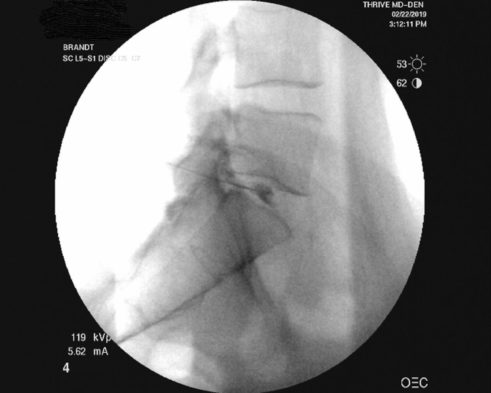Musculoskeletal disorders and lower back disc cartilage degeneration are a major cause of disability and morbidity globally and result in enormous costs for the health care systems. Degenerative disc disease and disc herniations are the most prevalent causes of back pain. The increase in musculoskeletal disorders among the aging population demonstrates an urgent need for a major change in managing this population.
Share this Post
Stem Cell Treatment for Low Back Pain Due to Degenerative Disc Disease
New biological therapies that can effectively treat spine degeneration are a high priority in regenerative medicine. Mesenchymal stem cells (MSCs) isolated from bone marrow (BM-MSCs) and adipose tissue (AD-MSCs) show considerable promise for lower back disc regeneration. Stem cell therapy offers the most significant therapeutic potential to provide an excellent alternative to joint replacement and surgical fusion.
Low back pain is one of the most significant causes of disability in the developed world, with lifetime prevalence estimated at over 80%. As the population ages, this percentage is likely to increase with the population growth. In the United States, low back pain is responsible for nearly 149 million lost workdays per year, with total costs estimated at $100-$200 billion a year.
Low back pain affects over 80% of the population.

Lateral imaging of the L5-S1 disc during stem cell placement into a patient with discogenic low back pain (x-ray guided stem cell back injection). Excellent spread of contrast is noted into the nucleus of the disc with spread into the posterior annular disc tear.
Primary Cause of Chronic Low Back Pain
Low back pain is a complex and multifactorial entity. There is increasing evidence obtained through imaging studies to suggest that a significant proportion of low back pain is associated with degeneration of the intervertebral disc, and direct clinical evidence implicating disc space narrowing and degeneration as a primary cause of chronic low back pain. Varying degrees of symptoms occur over many years.
Current & Future Treatments for Degenerative Disc Cartilage

For physicians, the challenge has been and remains, to figure out the timing, degree of symptoms and functional loss in order to determine the appropriate time to begin biologic treatment. Current research is now concentrating on the development of more biologic/regenerative therapies to target the underlying cause, begin to repair the degenerative disc, and prevent cartilage degeneration in the early stages of progression.
None of the current invasive surgical methods address the loss of growth factors and the progressive inflammatory environment that takes place in the degenerative disc or the loss of functional native cells and tissues within the disc. Research is focused on biological therapies and regenerative approaches intended to both inhibit breakdown and stimulate matrix or internal disc material production. Cell based therapies have become the primary focus of the current research field to achieve these needs.
Fat-Derived Adult Stem Cells for Disc Regeneration
Stem cell therapy aims to repopulate the cells in the degenerative disc and restore functional tissue through matrix synthesis by implanted cells and beneficial influences on native cells. Adult stem cells, or MSC’s, have been proposed as the ideal source for disc regeneration. An increasing number of studies have demonstrated the ability of both bone marrow MSC’s and adipose derived MSC’s to differentiate into discogenic cells.
Of note, adipose-derived (fat-derived) MSC’s produce more appropriate matrix and may thus offer the most appropriate cell source for disc regeneration. The characteristics of fat-derived stem cells have been well studied and have shown better ability to produce cartilage than bone marrow in every measurable parameter. In vivo studies have also demonstrated the ability of transplanted MSC’s to enhance matrix production and increase both disc height and hydration. Human clinical trials have also demonstrated improved pain and disability scores and increased water content in the disc at 12 months after MSC injection.
Additional Regenerative Traits of Adult Stem Cells
Adult stem cells have also been shown to communicate with the nucleus pulpusus (NP) cells in a bidirectional manner. It is suggested that implanted cells may influence the existing NP cell function through secretion of bioactive factors such as anabolic growth factors. In addition, the stem cells possess anti-inflammatory and anti-catabolic properties which could be used to decrease negative cytokine production and produce a healthier, non-degenerating NP cell.
The prospect of combining biomaterials and adult stem cells leads to an optimistic outlook. Interdisciplinary approaches may lead to significant breakthroughs in regenerating musculoskeletal tissues in the joint and the spine in the near future.
The Future of Spinal Disc Regeneration
Stem cell therapies offer huge potential to revolutionize the treatment of cartilage defects, disc herniations, and disc degeneration. Although enormous clinical progress has been achieved, there remains a wide range of technical hurdles and conceptual challenges to overcome as research progresses in this exciting and rapidly expanding field. Current autologous (from your own body) adult stem cell protocols for the treatment of lower back disc degeneration are showing enormous promise and inspiring back pain patient success stories. As the research continues to expand and offer more profound treatments, we will see a combination of earlier intervention and long term strategies that provide alternatives for invasive back surgery such as spinal fusion or discectomy.
*Individual patient results may vary. Contact us today to find out if stem cell therapy may be able to help you.

Knee Cartilage Regeneration | Stem Cells for Cartilage Repair, Part 1
For more of Dr. Brandt’s insight on stem cells for cartilage repair, check out the part 1 of this series: stem cells for knee cartilage regeneration.
Looking Forward to an Active Lifestyle Again
Stem Cell Therapy For Degenerating Discs
“I had back pain from 5 degenerating discs. I had 3 consults from different medical institutions and all had said that I would need fusion of 5 discs and 2 rods inserted into my back. I sent my MRI to Dr.Brandt and after review he said he thought he could help. I found Dr. Brandt’s office very helpful and informative. I am currently one out from my 2nd appointment and doing incredibly well. The pain and discomfort are gone ! I am currently engaged in exercise to strengthen my lower back and abdominal muscles. I am looking forward to an active lifestyle again. I selected Thrive MD due to Dr. Brandt’s experience in the stem field. The are many offices and medical centers that are beginning to get involved in the stem cell arena. I wanted a Doctor that has been doing this for a while and getting great results. Dr. Brandt has a kind and caring attitude, as well as his staff. I would highly recommend Thrive MD and already have sent many patients to him.”*Posted on Vitals.com & Google reviewsDr. Brian Bouck, Vitals.com, Google, February 2018


